Preface
Overview
For the Reader
For the Instructor
For the Expert
Acknowledgements
Part I: Basic Methods and Examples
Chapter 1. Introduction to Finite Markov Chains
1.1. Finite Markov Chains
1.2. Random Mapping Representation
1.3. Irreducibility and Aperiodicity
1.4. Random Walks on Graphs
1.5. Stationary Distributions
1.6. Reversibility and Time Reversals
1.7. Classifying the States of a Markov Chain*
Exercises
Notes
Chapter 2. Classical (and Useful) Markov Chains
2.1. Gambler's Ruin
2.2. Coupon Collecting
2.3. The Hypercube and the Ehrenfest Urn Model
2.4. The Pólya Urn Model
2.5. Birth-and-Death Chains
2.6. Random Walks on Groups
2.7. Random Walks on Z and Reflection Principles
Exercises
Notes
Chapter 3. Markov Chain Monte Carlo: Metropolis and Glauber Chains
3.1. Introduction
3.2. Metropolis Chains
3.3. Glauber Dynamics
Exercises
Notes
Chapter 4. Introduction to Markov Chain Mixing
4.1. Total Variation Distance
4.2. Coupling and Total Variation Distance
4.3. The Convergence Theorem
4.4. Standardizing Distance from Stationarity
4.5. Mixing Time
4.6. Mixing and Time Reversal
4.7. Ergodic Theorem*
Exercises
Notes
Chapter 5. Coupling
5.1. Definition
5.2. Bounding Total Variation Distance
5.3. Examples
5.4. Grand Couplings
Exercises
Notes
Chapter 6. Strong Stationary Times
6.1. Top-to-Random Shuffle
6.2. Definitions
6.3. Achieving Equilibrium
6.4. Strong Stationary Times and Bounding Distance
6.5. Examples
6.6. Stationary Times and Cesaro Mixing Time*
Exercises
Notes
Chapter 7. Lower Bounds on Mixing Times
7.1. Counting and Diameter Bounds
7.2. Bottleneck Ratio
7.3. Distinguishing Statistics
7.4. Examples
Exercises
Notes
Chapter 8. The Symmetric Group and Shuffling Cards
8.1. The Symmetric Group
8.2. Random Transpositions
8.3. Riffle Shuffles
Exercises
Notes
Chapter 9. Random Walks on Networks
9.1. Networks and Reversible Markov Chains
9.2. Harmonic Functions
9.3. Voltages and Current Flows
9.4. Effective Resistance
9.5. Escape Probabilities on a Square
Exercises
Notes
Chapter 10. Hitting Times
10.1. Definition
10.2. Random Target Times
10.3. Commute Time
10.4. Hitting Times for the Torus
10.5. Bounding Mixing Times via Hitting Times
10.6. Mixing for the Walk on Two Glued Graphs
Exercises
Notes
Chapter 11. Cover Times
11.1. Cover Times
11.2. The Matthews Method
11.3. Applications of the Matthews Method
Exercises
Notes
Chapter 12. Eigenvalues
12.1. The Spectral Representation of a Reversible Transition Matrix
12.2. The Relaxation Time
12.3. Eigenvalues and Eigenfunctions of Some Simple Random Walks
12.4. Product Chains
12.5. An 2 Bound
12.6. Time Averages
Exercises
Notes
Part II: The Plot Thickens
Chapter 13. Eigenfunctions and Comparison of Chains
13.1. Bounds on Spectral Gap via Contractions
13.2. Wilson's Method for Lower Bounds
13.3. The Dirichlet Form and the Bottleneck Ratio
13.4. Simple Comparison of Markov Chains
13.5. The Path Method
13.6. Expander Graphs*
Exercises
Notes
Chapter 14. The Transportation Metric and Path Coupling
14.1. The Transportation Metric
14.2. Path Coupling
14.3. Fast Mixing for Colorings
14.4. Approximate Counting
Exercises
Notes
Chapter 15. The Ising Model
15.1. Fast Mixing at High Temperature
15.2. The Complete Graph
15.3. The Cycle
15.4. The Tree
15.5. Block Dynamics
15.6. Lower Bound for Ising on Square*
Exercises
Notes
Chapter 16. From Shuffling Cards to Shuffling Genes
16.1. Random Adjacent Transpositions
16.2. Shuffling Genes
Exercise
Notes
Chapter 17. Martingales and Evolving Sets
17.1. Definition and Examples
17.2. Optional Stopping Theorem
17.3. Applications
17.4. Evolving Sets
17.5. A General Bound on Return Probabilities
17.6. Harmonic Functions and the Doob h-Transform
17.7. Strong Stationary Times from Evolving Sets
Exercises
Notes
Chapter 18. The Cutoff Phenomenon
18.1. Definition
18.2. Examples of Cutoff
18.3. A Necessary Condition for Cutoff
18.4. Separation Cutoff
Exercise
Notes
Chapter 19. Lamplighter Walks
19.1. Introduction
19.2. Relaxation Time Bounds
19.3. Mixing Time Bounds
19.4. Examples
Notes
Chapter 20. Continuous-Time Chains*
20.1. Definitions
20.2. Continuous-Time Mixing
20.3. Spectral Gap
20.4. Product Chains
Exercises
Notes
Chapter 21. Countable State Space Chains*
21.1. Recurrence and Transience
21.2. Infinite Networks
21.3. Positive Recurrence and Convergence
21.4. Null Recurrence and Convergence
21.5. Bounds on Return Probabilities
Exercises
Notes
Chapter 22. Coupling from the Past
22.1. Introduction
22.2. Monotone CFTP
22.3. Perfect Sampling via Coupling from the Past
22.4. The Hardcore Model
22.5. Random State of an Unknown Markov Chain
Exercise
Notes
Chapter 23. Open Problems
23.1. The Ising Model
23.2. Cutoff
23.3. Other Problems
Appendix A. Background Material
A.1. Probability Spaces and Random Variables
A.2. Metric Spaces
A.3. Linear Algebra
A.4. Miscellaneous
Appendix B. Introduction to Simulation
B.1. What Is Simulation?
B.2. Von Neumann Unbiasing*
B.3. Simulating Discrete Distributions and Sampling
B.4. Inverse Distribution Function Method
B.5. Acceptance-Rejection Sampling
B.6. Simulating Normal Random Variables
B.7. Sampling from the Simplex
B.8. About Random Numbers
B.9. Sampling from Large Sets*
Exercises
Notes
Appendix C. Solutions to Selected Exercises
Bibliography
Notation Index
Index
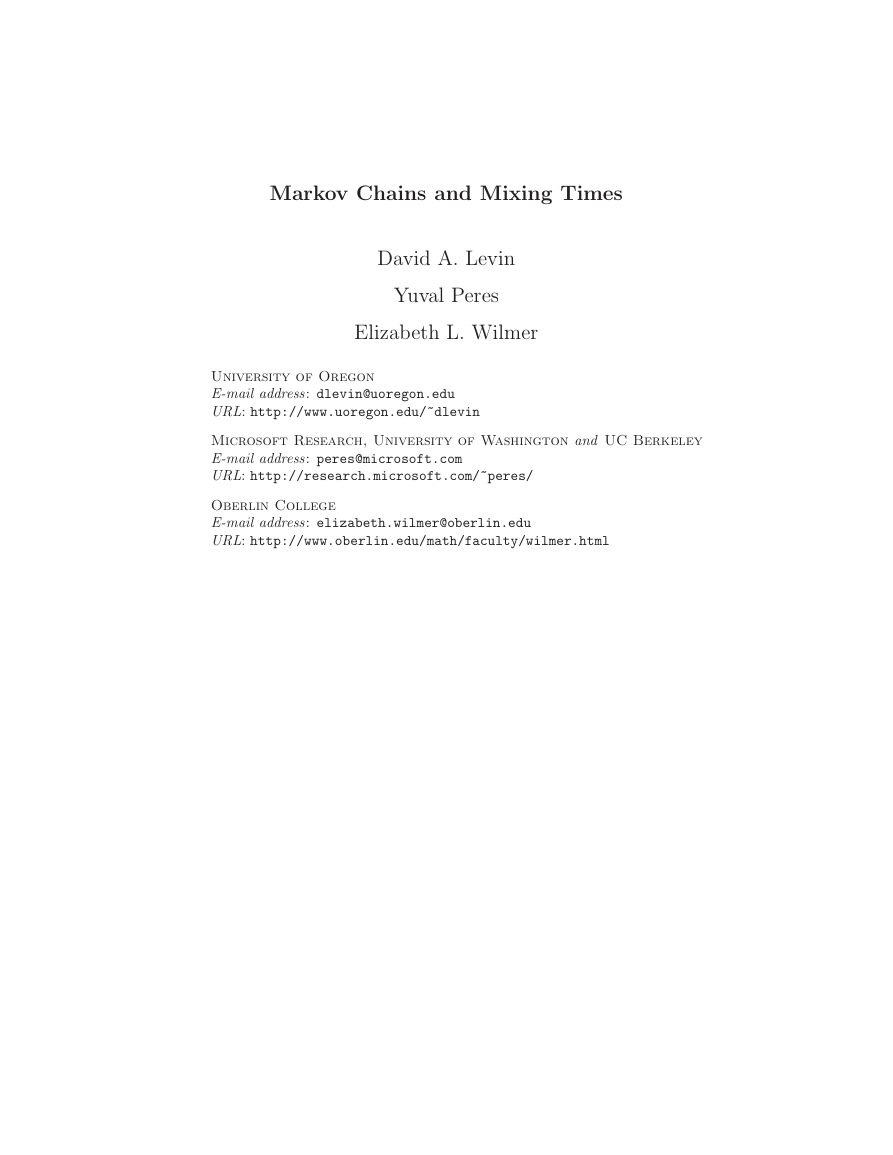

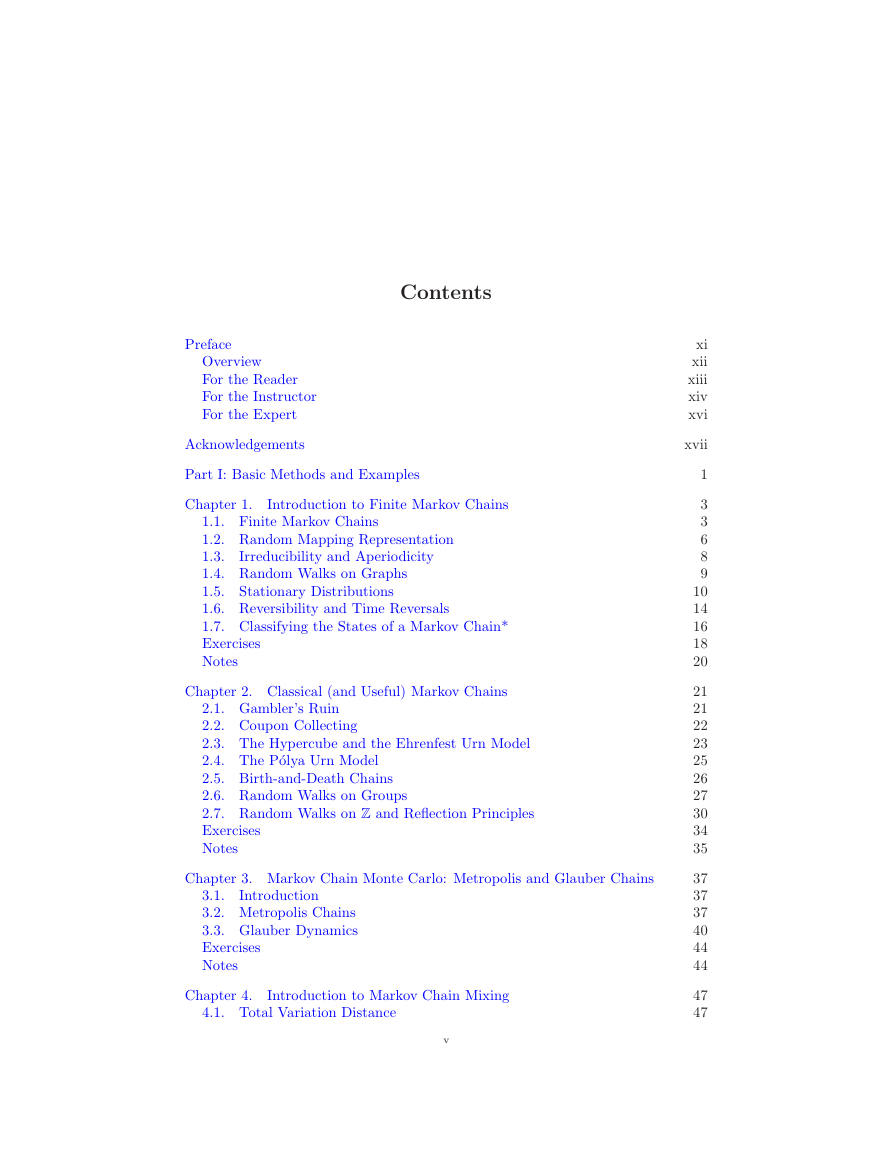
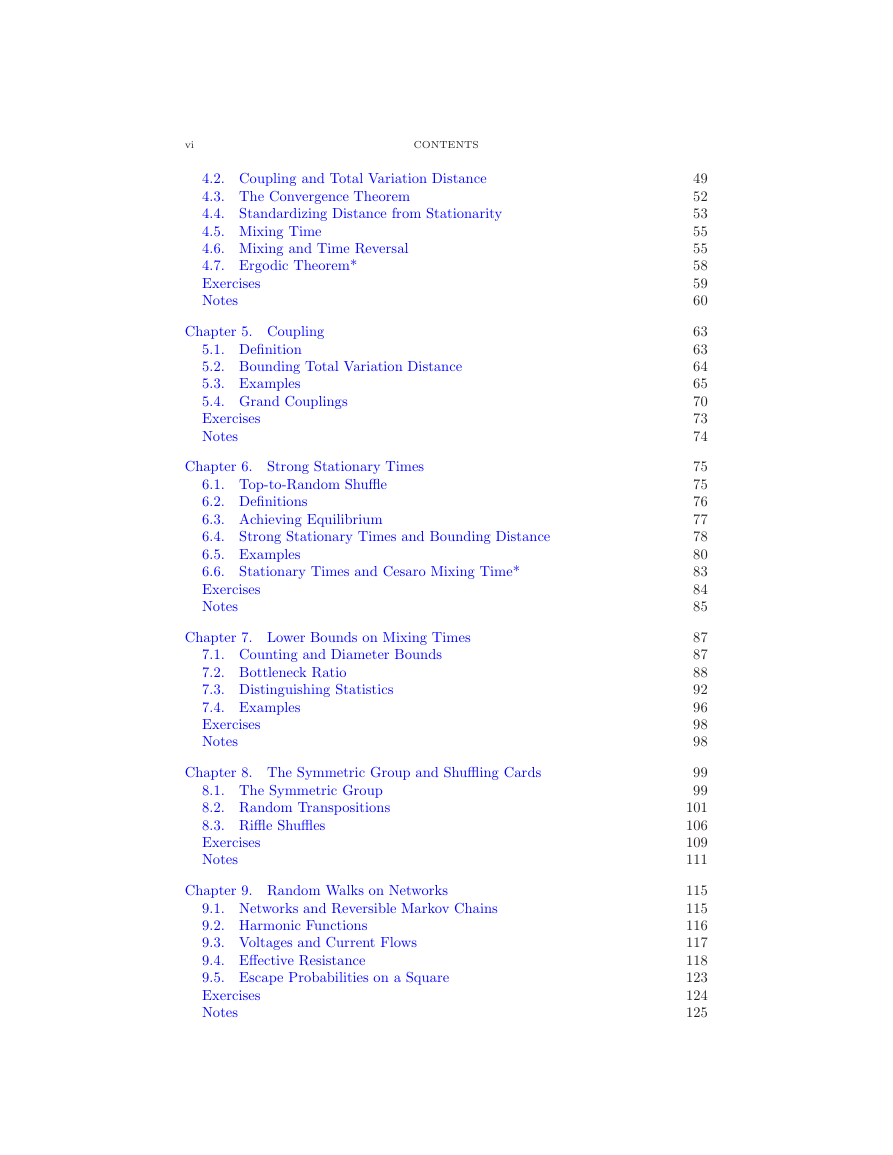
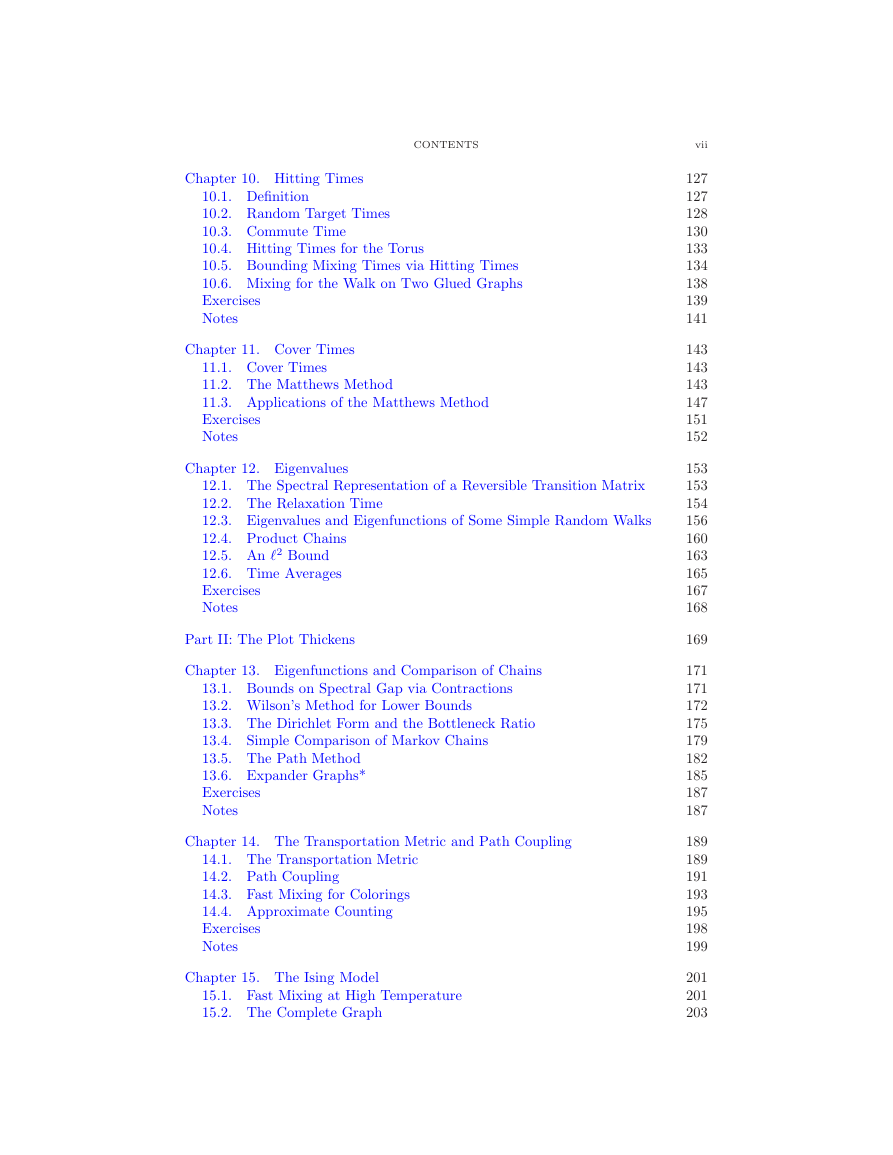
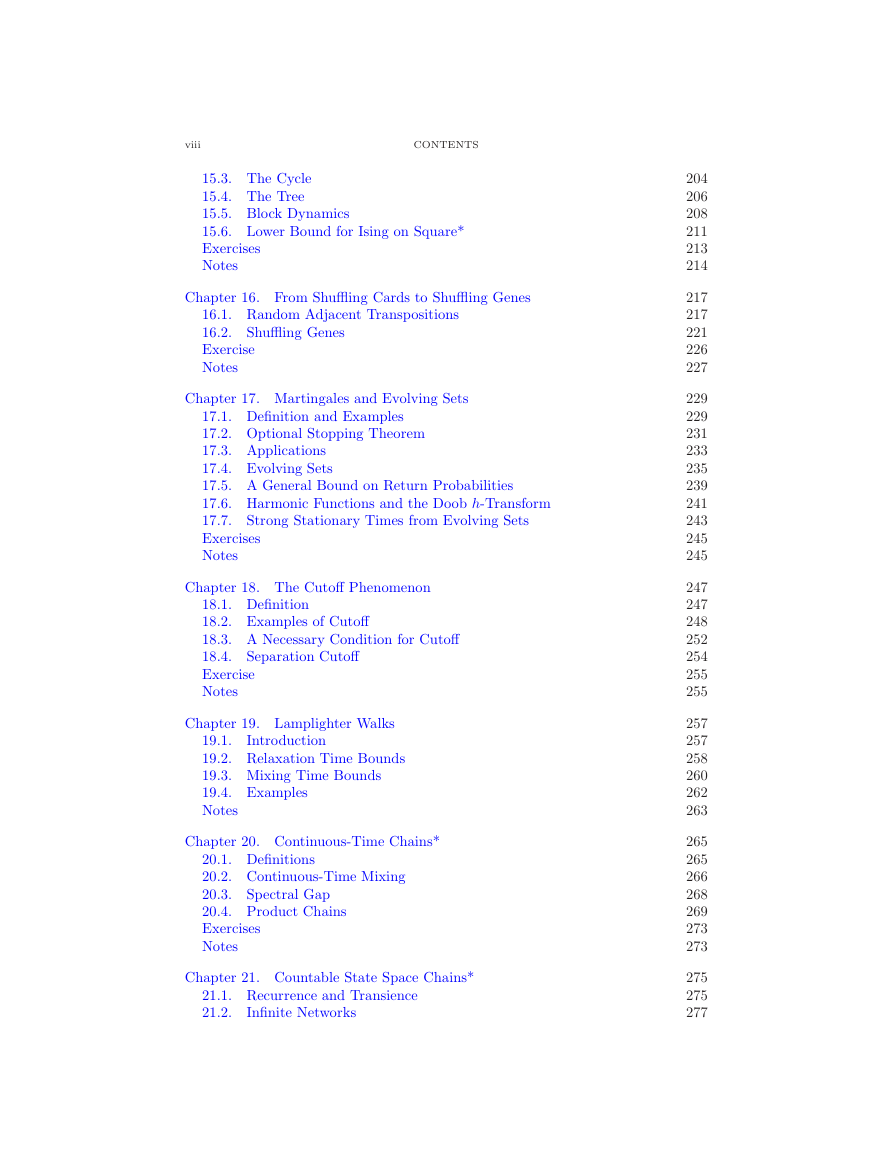
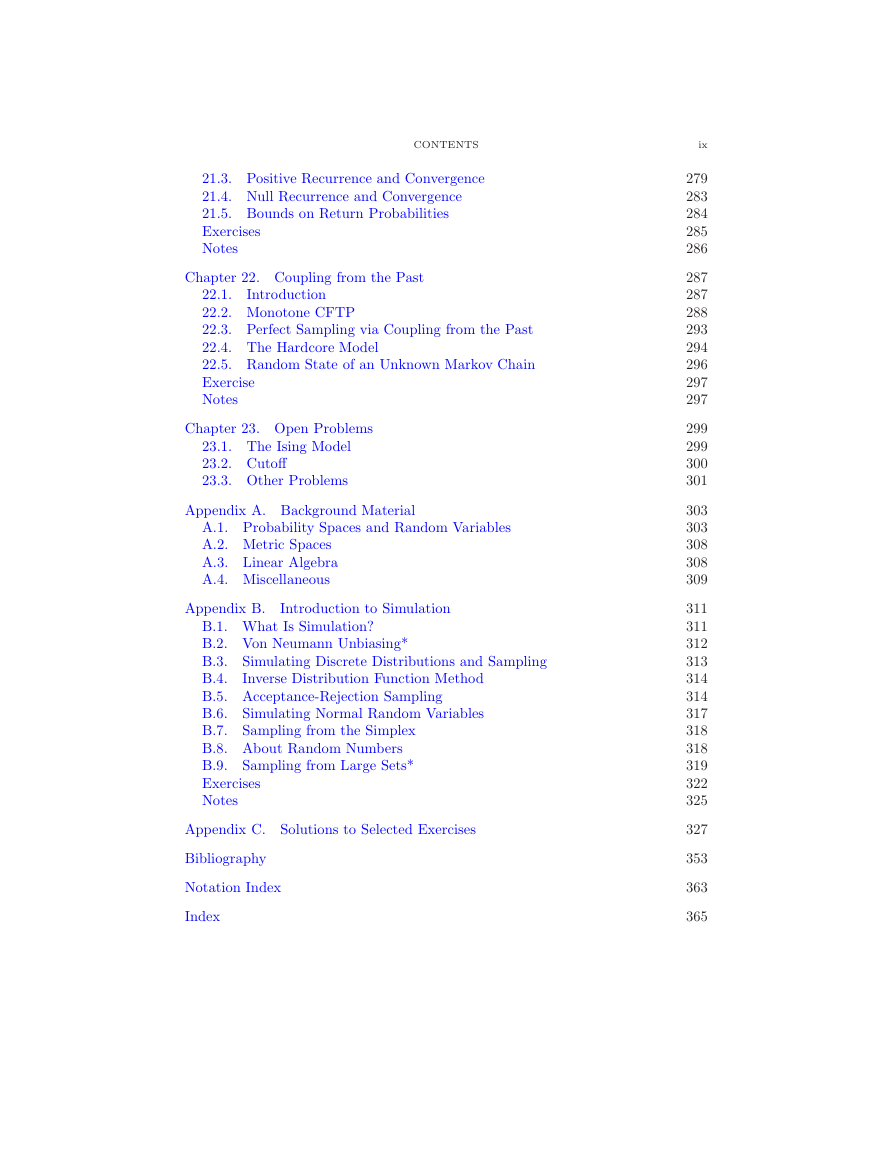









 2023年江西萍乡中考道德与法治真题及答案.doc
2023年江西萍乡中考道德与法治真题及答案.doc 2012年重庆南川中考生物真题及答案.doc
2012年重庆南川中考生物真题及答案.doc 2013年江西师范大学地理学综合及文艺理论基础考研真题.doc
2013年江西师范大学地理学综合及文艺理论基础考研真题.doc 2020年四川甘孜小升初语文真题及答案I卷.doc
2020年四川甘孜小升初语文真题及答案I卷.doc 2020年注册岩土工程师专业基础考试真题及答案.doc
2020年注册岩土工程师专业基础考试真题及答案.doc 2023-2024学年福建省厦门市九年级上学期数学月考试题及答案.doc
2023-2024学年福建省厦门市九年级上学期数学月考试题及答案.doc 2021-2022学年辽宁省沈阳市大东区九年级上学期语文期末试题及答案.doc
2021-2022学年辽宁省沈阳市大东区九年级上学期语文期末试题及答案.doc 2022-2023学年北京东城区初三第一学期物理期末试卷及答案.doc
2022-2023学年北京东城区初三第一学期物理期末试卷及答案.doc 2018上半年江西教师资格初中地理学科知识与教学能力真题及答案.doc
2018上半年江西教师资格初中地理学科知识与教学能力真题及答案.doc 2012年河北国家公务员申论考试真题及答案-省级.doc
2012年河北国家公务员申论考试真题及答案-省级.doc 2020-2021学年江苏省扬州市江都区邵樊片九年级上学期数学第一次质量检测试题及答案.doc
2020-2021学年江苏省扬州市江都区邵樊片九年级上学期数学第一次质量检测试题及答案.doc 2022下半年黑龙江教师资格证中学综合素质真题及答案.doc
2022下半年黑龙江教师资格证中学综合素质真题及答案.doc